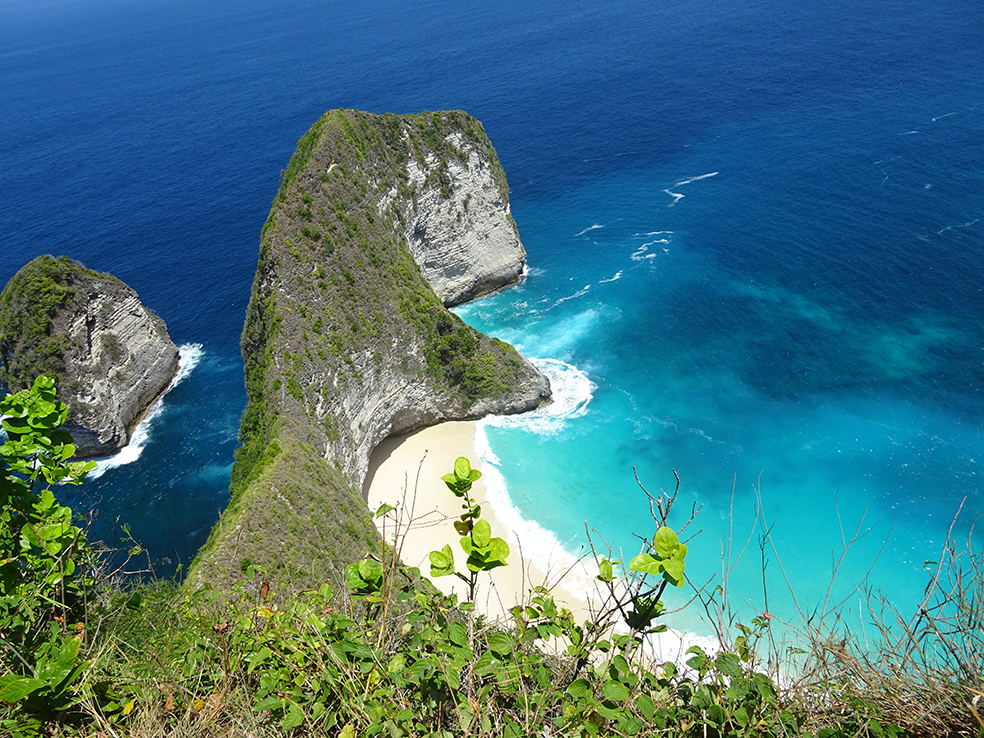Indonesia, from island to island
The gigantic Indonesian archipelago comprises over 17,500 islands which are home to 250 million inhabitants, around 700 different languages and hundreds of different religions and ancient traditions. These characteristics make Indonesia one of the world’s most culturally diverse countries, taking the visitor to different universes as they hop from one island to another.
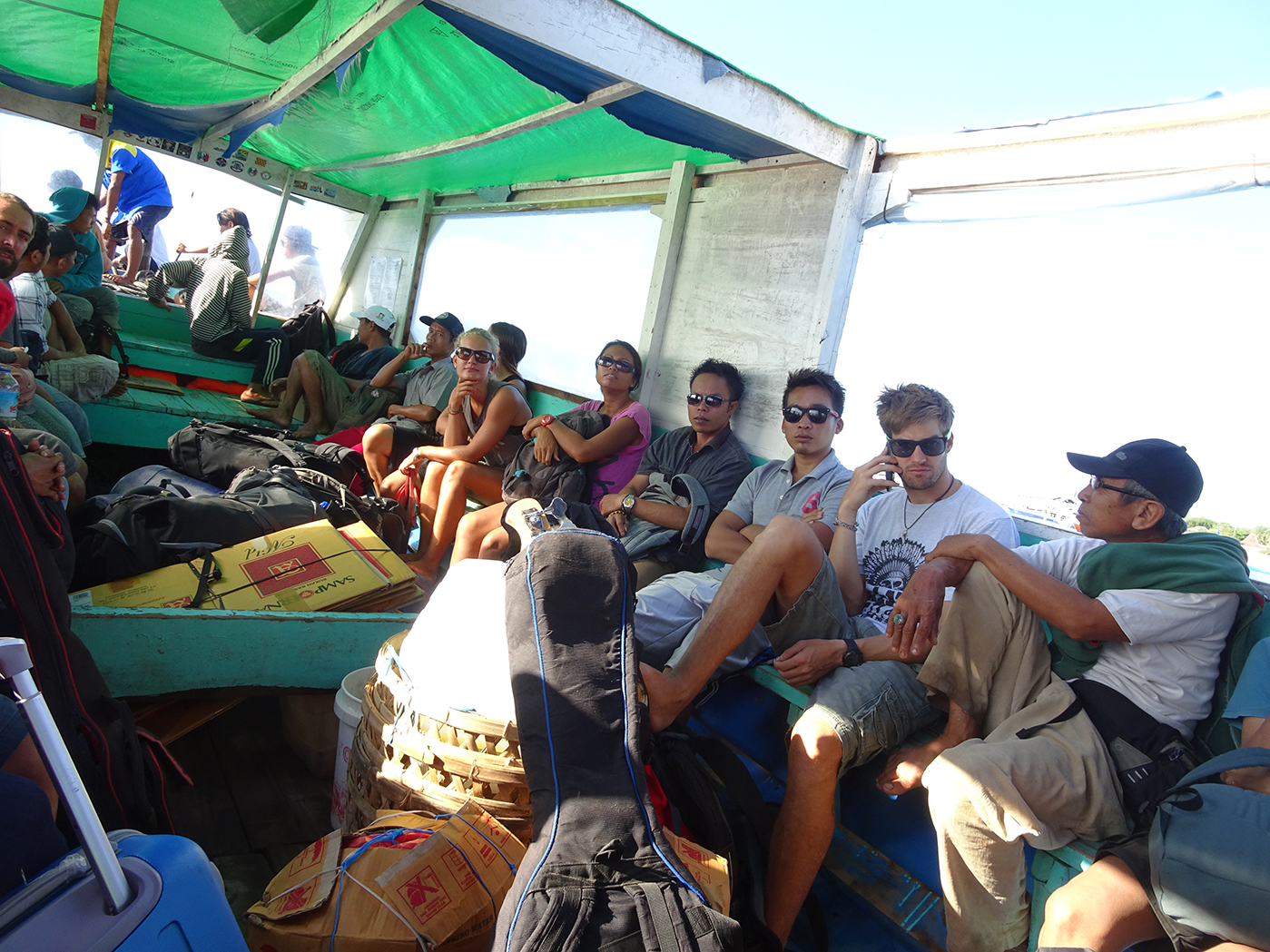
The island of Bali and the Gili Islands are tourist destinations that attract thousands of tourists to this corner of South East Asia every year. White sandy beaches, crystal-clear waters and large amounts of surfing make this the perfect spot for those who are looking to enjoy a ‘sun and beach’ holiday.
The Gili Islands are an archipelago of three small islands, located off the northeast coast of Lombok. This destination is very popular for those who are looking to explore another island that is easily accessible from Bali. It must be said, however, that each Gili island is special in its own way, so you need to know what you’re looking for before deciding on where to explore next.
Gili Air
Indonesia has a laid-back atmosphere in general, but this is especially pronounced in Gili Air. There are no cars or motorbikes, and the concept of “hurrying” doesn’t exist. You will get this sensation when you arrive at the port of Gili Air, greeted only by colourful horse-drawn carts waiting to take tourists and locals to any spot on the island.
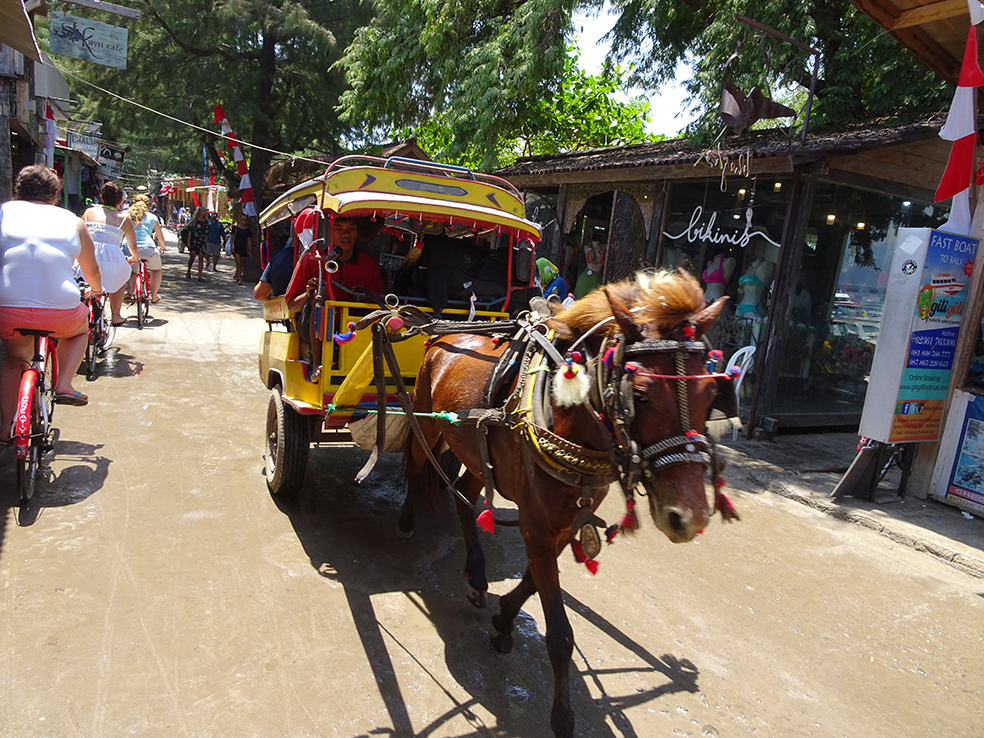
Motorised vehicles are prohibited on the island of Gili Air. As such, the most popular forms of transport are horse-drawn carts (cidomos) and bicycles, lending a special charm to this small island. If they wish, tourists can also get around the island by walking along its palm tree-lined dirt paths.
The island’s beaches are not made of sand; rather, they are comprised of eroded coral reefs, making it uncomfortable to sunbathe on the beach itself. However, a comfortable option is to relax in the sun as you enjoy a drink at one of the beachfront restaurants. We recommend wearing appropriate footwear so that you can walk on the beach without hurting yourself.

The most impressive thing about Gili Air is its turquoise blue waters. The rich seabed is what caught our attention most about this island. The island is a great spot for snorkelling, although its seabed is the most deteriorated out of all the Gili Islands.
Despite the vast amount of accommodation options and restaurants, it doesn’t feel like it is filled with tourists. This island is small, very peaceful and relatively authentic – especially in the inland areas – where you can lose yourself in a maze of palm tree-lined dirt tracks that are only covered by horse-drawn carts and bicycles.
Everything changes after 5 p.m. when the sun goes down. The northern part of the island becomes crowded, as people flock to see the sun hide behind Bali’s Mount Agung.
Gili Trawangan
The largest of the Gili Islands is famed for being a party island, welcoming young people from around the world who are drawn in by its atmosphere. However, if you move away from the main strip (where the boats dock up), Gili Trawangan also offers spots with peaceful and more authentic atmospheres.
The same thing happens with accommodation: by walking 10 minutes inland from the port, you can find a bungalow at half the price of those dotted along the main strip with the same characteristics, which includes breakfast and air conditioning.
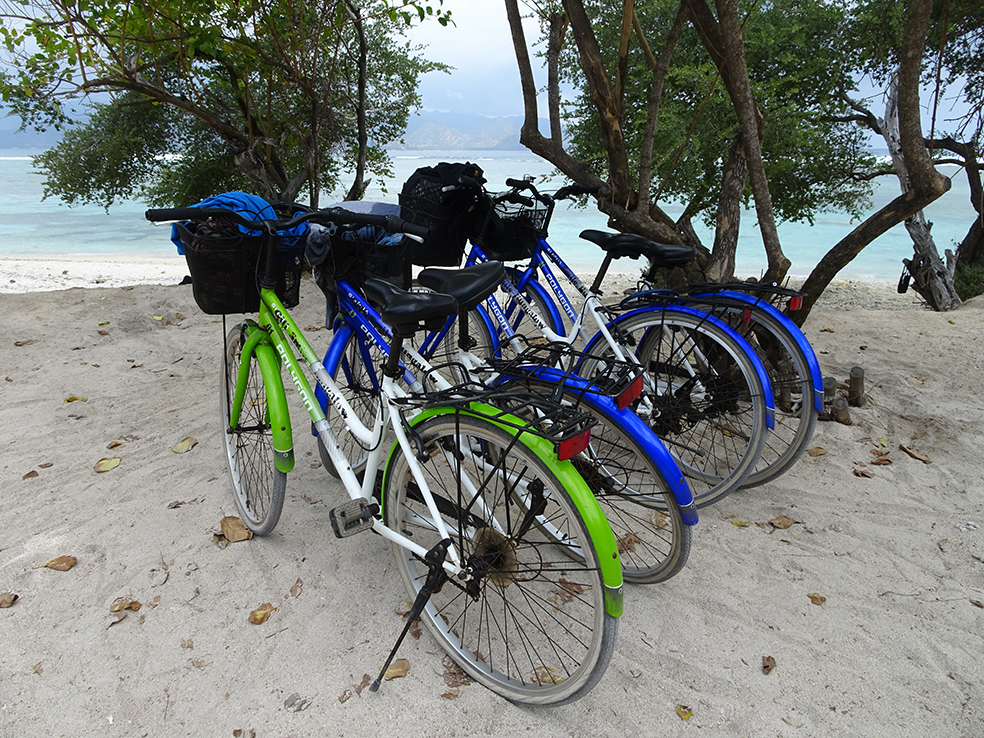
While a few years ago you wouldn’t have seen a single motorised vehicle on the island, the use of electric motorcycles is now becoming increasingly popular. However, with this being a very flat island, the best way to enjoy it is by renting a bicycle from your hostel or one of the shops on the main strip. It costs 40,000 rupiahs to rent a bike for the whole day (€2.50), leaving you free to go wherever you like on the island. You could skirt around the edge of the island in 2 hours. Overall this is a relatively easy cycle that only becomes difficult in a few places where there is no cycle track, meaning you will need to cycle on the sand. However, this will take you 5 minutes at most.
Once you’ve got your bike, all you need is your goggles and tube to be able to go snorkelling. If you forgot to bring these with you, don’t worry, as they can be rented for hours or for a whole day from any beachfront bar or restaurant. Gili Trawangan probably has the best snorkelling conditions out of all the Gili islands, with divers able to catch a glimpse of enormous turtles swimming very close to the shore. You’ll feel like spending hour after hour swimming in these turquoise waters above a series of coral reefs.

When night falls, be sure to have dinner at the Night Market at the entrance to the island: a true spectacle of freshly caught fish, seafood and recently cooked traditional Indonesian dishes. It’s usually fairly busy, so don’t go there if you’re in a rush. It’s worth queuing for a little bit to get a seat at one of the outdoor tables.
The island transforms when the sun goes down. A peaceful island of quiet beaches during the day becomes an island of music, neon lights and copious amounts of alcohol at night. This is the most popular island among young people who are looking to party in idyllic surroundings.
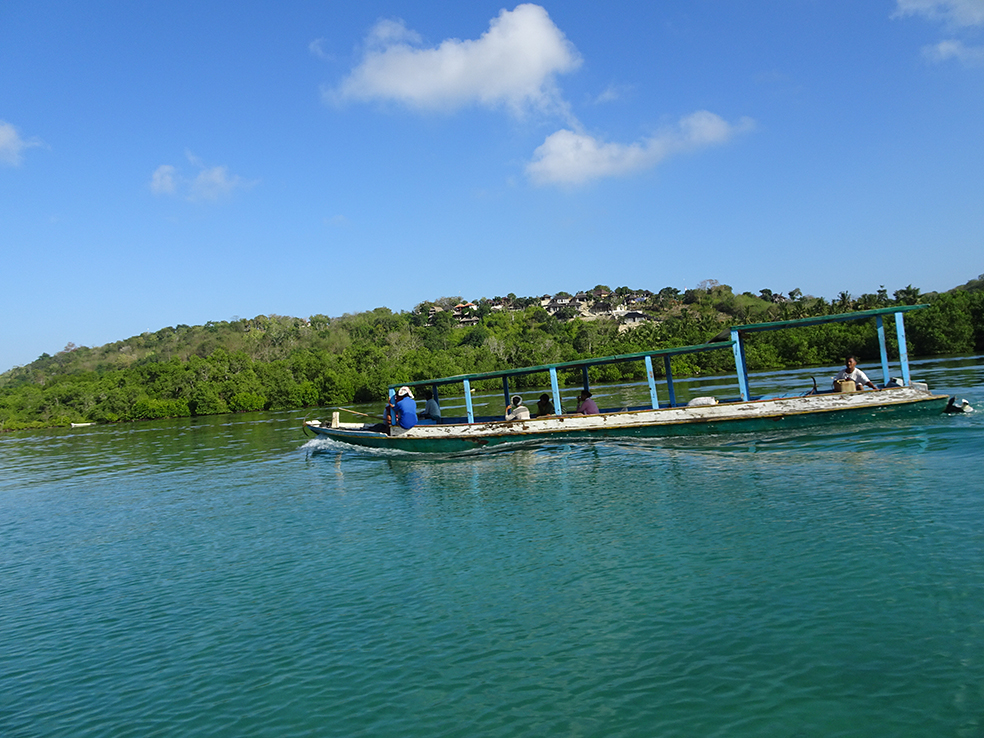
Gili Meno
As the island is less exploited, the accommodation prices are slightly more expensive here than those of the other Gili Islands. This destination is chosen by the majority of tourists who come to the Gili Islands for their honeymoon, with an atmosphere that is appropriate for such an occasion: a romantic island with an infrastructure that is geared primarily to higher-level tourism.
2 kilometres long and 1 kilometre wide, you’ll have almost the entire island to yourself. This is the least visited of the Gili Islands, with the beaches often empty for practically the whole day. Boats dock up in the western part of the island, which is where most accommodation options and restaurants can be found. However, by straying from this area, you have an entire paradise that is yours to explore.
However, please remember to wear appropriate footwear if you want to go swimming at the beach, as this will avoid accidents.
If you choose to visit Gili Meno, be very wary of mosquitos. There is a small lake in the middle of the island, meaning the island is quite literally plagued with mosquitos.
You can access this island from Gili Air or Gili Trawangan by local ferry, costing 25,000 rupiahs (€1.50); or by speed boat, costing 100,000 rupiahs (€6.50).
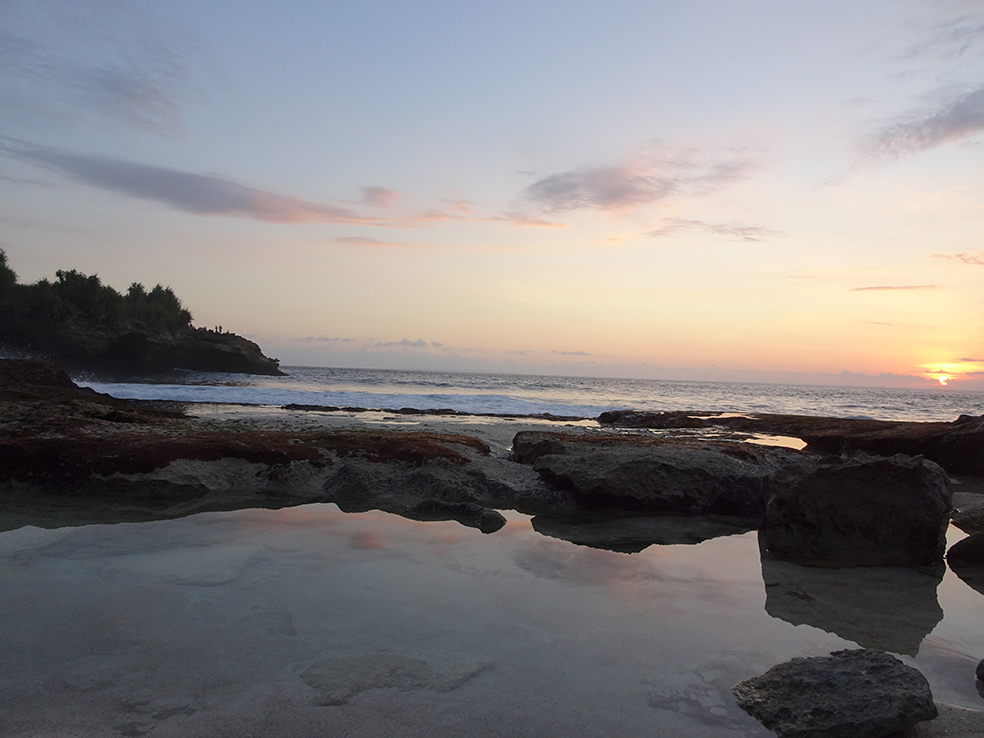
Before you set off on your travels, you should know that the best beaches in the Bali province are not found on the so-called Island of Gods. Rather, they are located on the Nusa Islands, which belong to the same province. To the south-east of Bali, you will find the islands of Nusa Penida, Nusa Lembongan and Nusa Ceningan.
Nusa Lembongan
This island can be accessed by ferry, leaving from the Port of Sanur in Bali. The journey time is approximately 30 minutes.
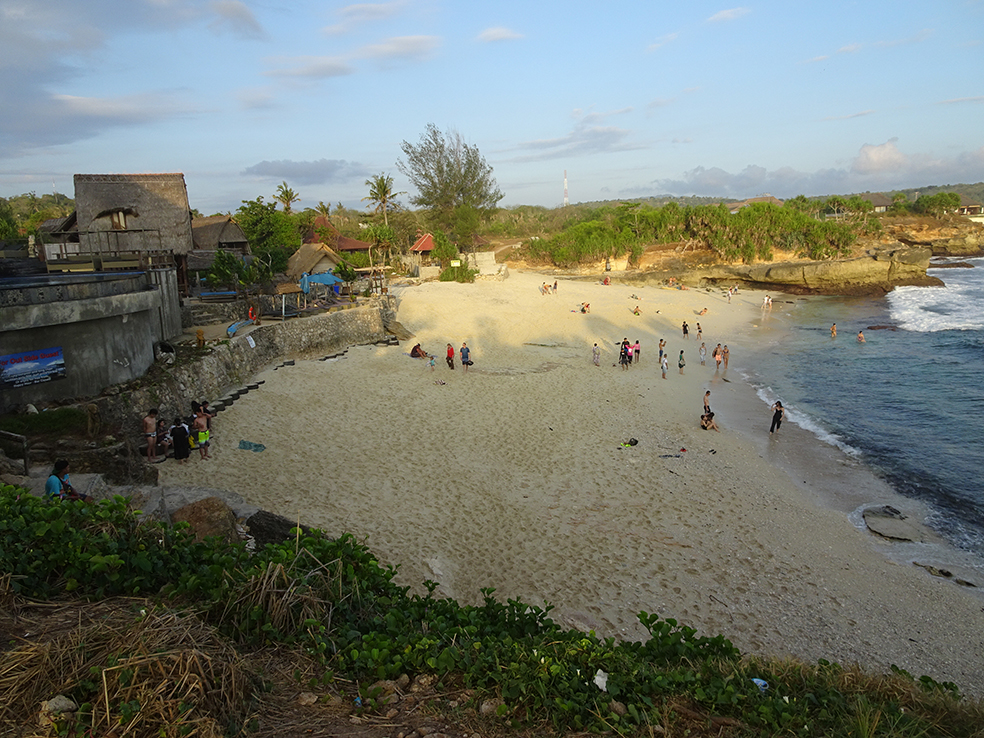
As soon as you arrive, you will realise that this is a much more peaceful and modest island than Bali, which is much less touristy. It’s perfect for spending a few relaxing days on its several beaches – including Mushroom Bay and Dream Beach – which has a swing overlooking the water, which is one of the most shot photographs on the island. Nearby you will find the; an area of imposing cliff faces which is perfect for watching the sun go down.
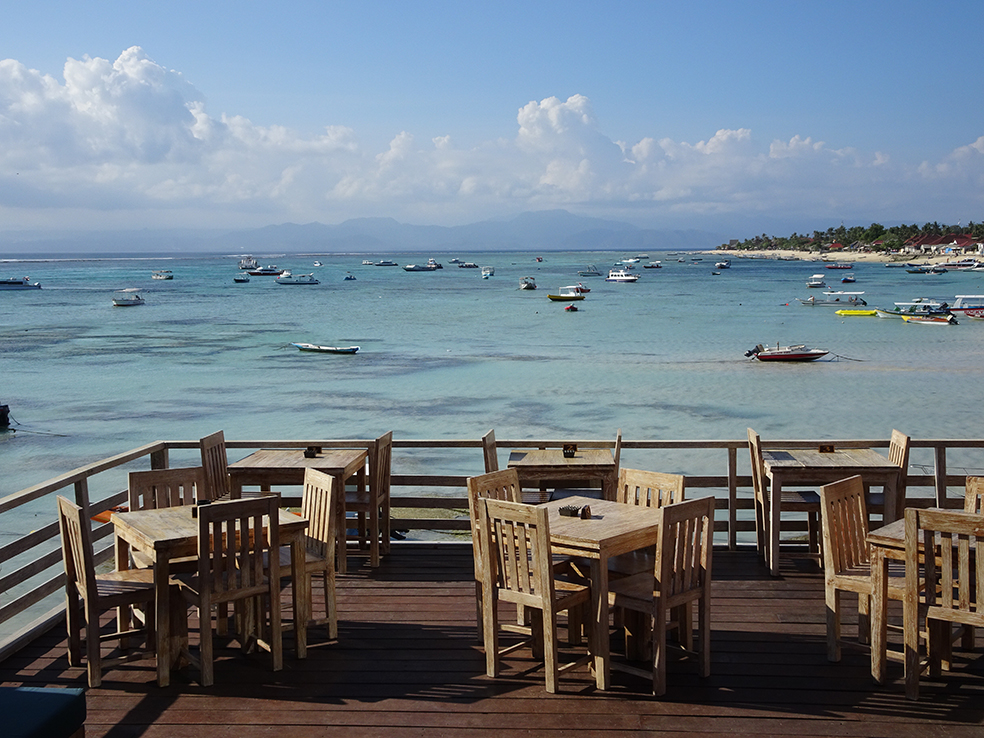
From Nusa Lembongan, you can take a public boat to Nusa Penida. However, depending on the season, there might be barely any boats running. In this case, you’ll need to talk to a boat owner and pay him/her privately to take you there.
Nusa Penida
You’ll need at least a whole day to see everything this island has to offer, which is becoming the most popular Nusa Island because of its incredible landscapes. This is the largest of the three islands, and it is also the least touristic, meaning its hotel selection is limited.
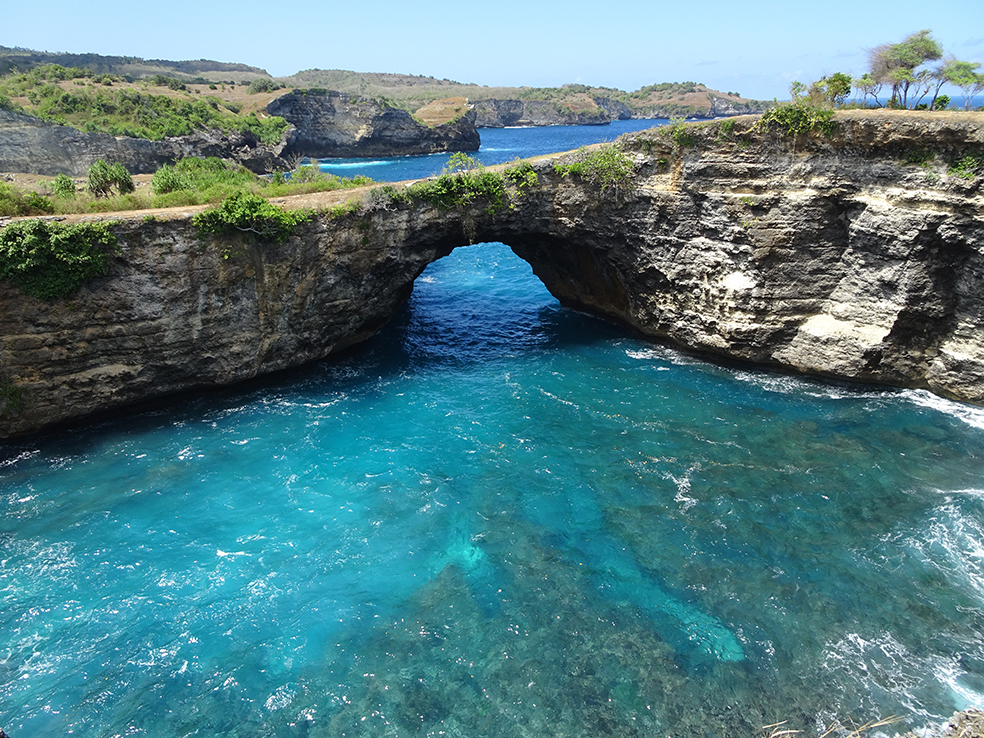
Once you arrive at the Port of Toyapakeh, you’ll find the locals can be fairly insistent on offering you a guided tour. This could be a good option, as they’ll know how to get to the tourist attractions and when there will be fewer people there and can also help you get down to some inaccessible cliffs. However, we must also tell you that you can do all of this by yourself by renting a motorbike, asking for directions from local people who you find along the way.
If you decide to visit Nusa Penisa, you must be sure to visit the following places:
- Crystal Bay: a peaceful beach with perfect conditions for snorkelling, given the lack of current.
- Kelingking Beach (Secret Point): a beach at the foot of some steep cliff faces with views you could only dream of. This is probably the most photographed location of Nusa Penida. If you have a fear of heights, perhaps this isn’t the beach for you. If you don’t, be sure to walk down to the beach below (taking lots of care!).
- Angel’s Billabong natural infinity pool, which you can access with appropriate footwear and when the tide allows it. You must also marvel at the views from Broken Beach: a natural stone arch which contrasts with the turquoise tones of the seabed.
- Diving lovers must be sure to pay a visit to the Manta Point, where you can get a great close-up view of enormous stingrays.
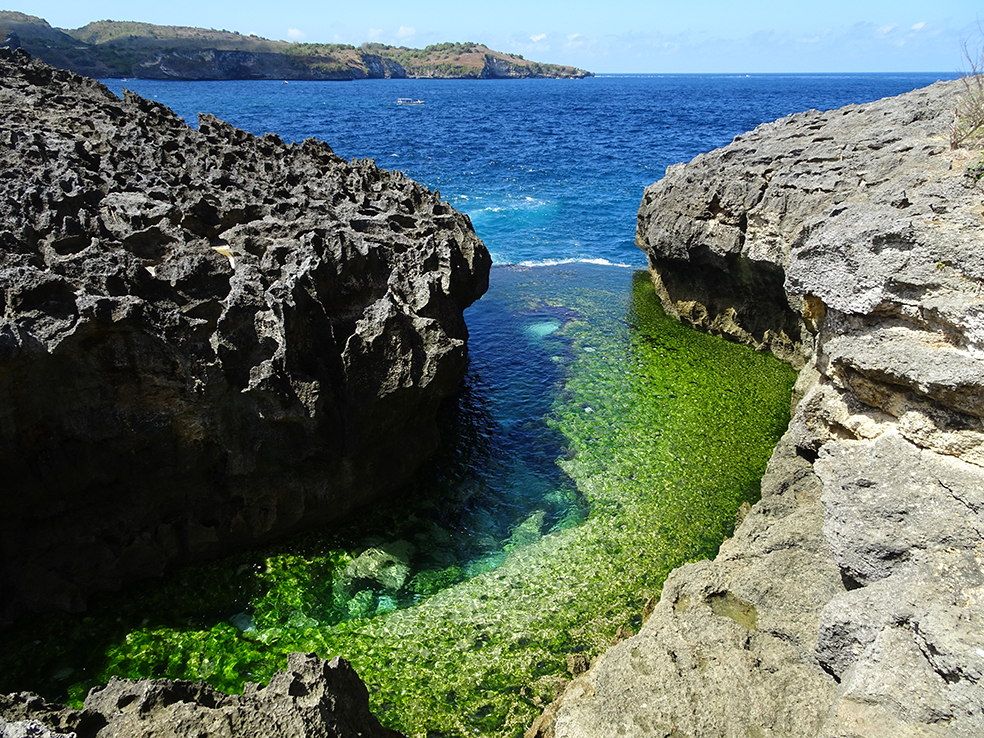
But not all Indonesian islands are the same. The biggest attractions on the island of Java are treks around active volcanoes, such as Mount Bromo, and visits to immense temple complexes such as Borobudur. For diving lovers, Indonesia has some of the world’s best coral reefs where you can find some species of fish that aren’t found anywhere else in the world. The Bunaken National Marine Park is the best destination for enjoying underwater life, whether you’re looking to make an investment or you’re looking for the most amazing snorkel you’ve ever laid your eyes on. If you’re seeking adventure, be sure to visit the island of Sumatra and go on a jungle trek. This is one of the few places on the planet where you can still catch sight of wild orangutans.
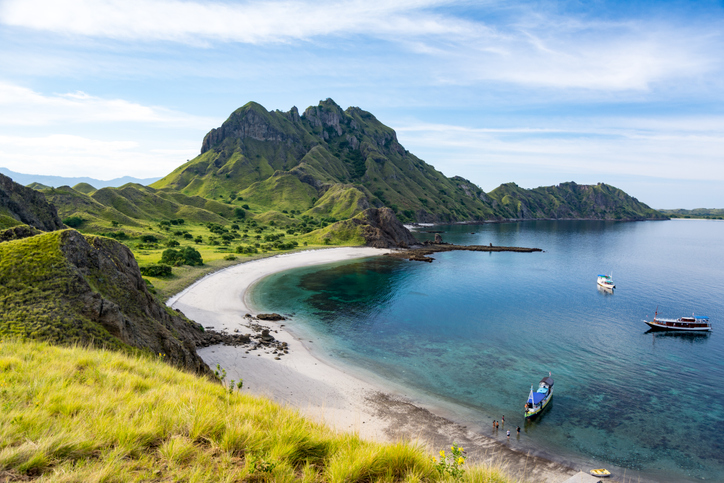
The island of Komodo is also renowned because of its most famous inhabitant: the Komodo dragon. This lizard species can weight up to 70 kg, measuring 3 metres in length. This lizard came to stay around 4 million years ago, and it looks like it has enjoyed it. There are multiple boat trips to the island of Komodo from Bali and the Gili islands. You can make this journey in a fast boat or in several mini cruises lasting several days, reaching the island after making several stop-offs in incredible locations to take a dip in the sea or go snorkelling.
However, some of Indonesia’s best-kept secrets are found in the faraway islands of Raja Ampat, very close to West Papua. This remote natural park is not very accessible and, even today, still doesn’t possess an infrastructure that allows tourists to easily organise their trips. It is precisely this characteristic which keeps this paradise unspoiled, although there are now some tour operators who offer short sailing cruises around these islands for a fair amount of money.

At the easternmost part of the Indonesian archipelago, you’ll find Papua New Guinea: one of the planet’s most remote places which is visited by very few people. Its jungles are currently the last refuge for a large number of isolated tribes.
When travelling to the Indonesian islands, please consider the following:
- In most mid-range accommodation offerings, the shower water will be salty.
- There are not many cash points on the island, and you never know when they will stop working. We, therefore, recommend bringing cash with you at all times.
- Always try and buy tickets for public ferries (as opposed to private boats) at the ports of each island. At your hotel or hostel, they will always tell you that the tickets are the same price and that you don’t need a ticket, but they are always cheaper at the port as you don’t pay the commission of the accommodation.
- Take a waterproof case for your backpack, as many boats will pick you up from the shore. If the water is choppy, you are very likely to get soaked. On these boats, the crew will usually help you get on the boat, asking you to leave your flip flops in a basket before boarding.
Alejandra Chito is a journalist. One day, she decided that she wanted to communicate in a different way: via her travels. This passion led to her becoming a nomadic adventurer, who has now travelled to various locations around the globe. This restless Malaga-born adventurer specialises in low-cost travelling; via her experiences, future travellers learn how to squeeze every last drop out of a destination.



